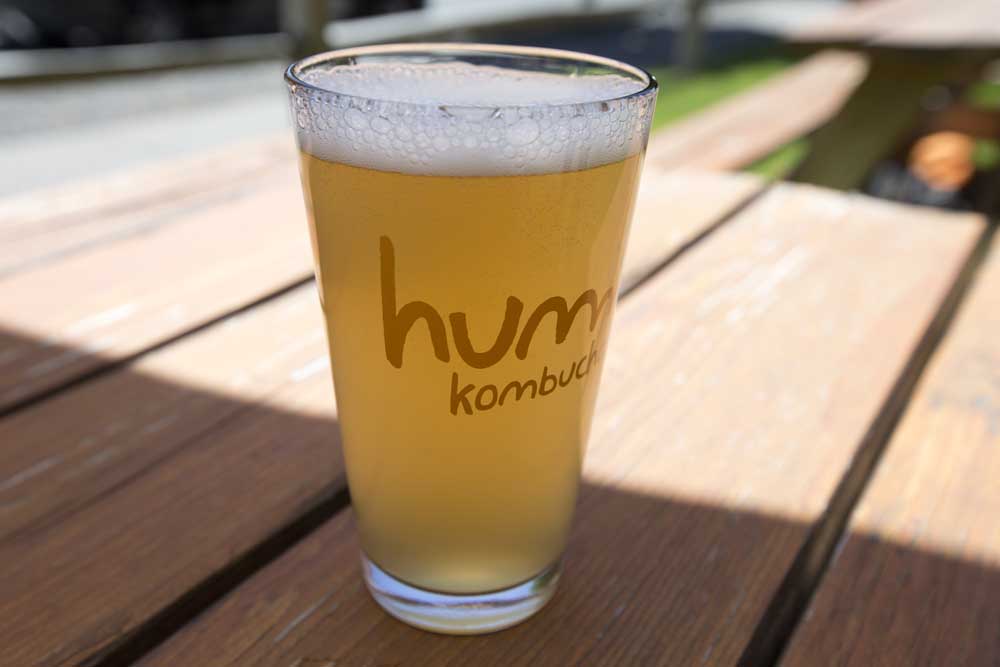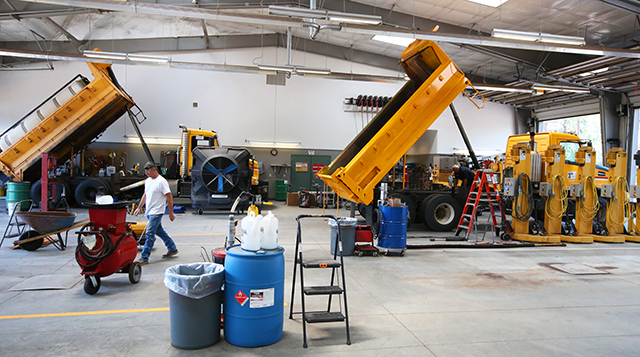Humm, Deschutes partner on ‘kom-brew-cha’
Published 12:00 am Thursday, June 7, 2018

- The new Deschutes Brewery Humm Zinger at the Deschutes Brewery tasting room in Bend on June 6, 2018. (Andy Tullis/Bulletin photo)
Beer crosses over readily with other fermented beverages, such as cider and mead, offering similarities in brewing process and equipment as well as often being complementary to one another. For instance, a blend of beer with hard cider is called a snakebite; braggot is a traditional beverage that combines beer with mead (honey wine).
Deschutes Brewery and Humm Kombucha of Bend introduce the next fermented matchup: beer and kombucha. The companies released Humm Zinger, a blend of the two beverages that Deschutes calls a kombucha radler. A radler is a type of beer cocktail that usually consists of a 50-50 blend of Pilsner or wheat ale with sparkling lemonade or other citrus soda.
Trending
In recent years, kombucha has grown in popularity and captured the imaginations of beer drinkers and brewers alike. Kombucha is a fermented tea, lightly effervescent, that is often sweetened or flavored, and is promoted as having a variety of health benefits. Like beer, it can be brewed at home, and many of the companies producing kombucha commercially began their businesses in the kitchen.
The process is fairly simple. Brewers start by brewing tea (black, green, or any variety thereof), sweeten it lightly with sugar or other syrups, and inoculate the liquid with a “symbiotic culture of bacteria and yeast” (usually shortened to SCOBY). Unlike the saccharomyces yeast used in brewing beer, the SCOBY consists of a variety of yeasts and bacteria that ferments the sweet tea in a manner similar to fermented foods such as sauerkraut and kimchi.
The finished kombucha is ready to drink within about a week.
Fermentation does yield a small amount of alcohol; kombucha sold commercially is federally required to contain less than one-half of 1 percent alcohol by volume, which is the legal limit for a beverage to be considered alcoholic. As such, there is no age restriction on purchasing it.
A small amount of vinegar is present as well, which contributes to the tart and refreshing nature of the drink. And because kombucha is usually unpasteurized, advocates tout the probiotic benefits as well as other healthful attributes.
On a commercial scale, brewing kombucha appears quite similar to brewing beer. Humm Kombucha’s production facility might well be indistinguishable from a brewery to the untrained eye — brew kettles, fermenters, conditioning tanks, and a bottling line occupy the space. Kombucha is big business for the 10-year-old company; in addition to building a new facility in Roanoke, Virginia, Humm also has a production facility in Sweden.
Trending
The company currently produces up to 100,000 barrels annually (or more than 28 millions bottles).
This weekend, Humm celebrates its success with the fourth annual Hummfest, taking place at its Second Street tap room all day Saturday. Billed as the company’s yearly “thank you” to its hometown, the event highlights its “refreshed” tap room with two dozen rotating taps, food, live music, and the release of Humm Zinger.
Inevitably, as with cider and mead, kombucha and beer were destined to cross over, and Humm Kombucha and Deschutes Brewery worked together to do just that. The two companies tested 130 recipes over the past three years before settling on Humm Zinger.
According to a blog post by Deschutes, Humm Zinger uses “Pilsner malt that we use in many of our beers combined with a kettle sour from the pub combined with a specialty Humm brew that pairs tangy grapefruit with the iconic Cascade hops.”
According to a statement from Humm, the kombucha component is “a custom brewed kombucha from fermentation to flavoring” brewed specially for this purpose. The company also revealed that the blend consists of at least 40 percent kombucha.
I cracked open a can of Humm Zinger to taste for myself. It pours a hazy golden color with a crisp white head of foam, and my first impression of the aroma was of a Belgian witbier — creamy with light coriander spice. (I don’t know if coriander is used in the formulation.) Grapefruit asserts itself and blends well with grainy, crisp malt.
The flavor offers up what I would describe as a fairly traditional radler, light with lemon and citrus flavors, lightly tart and a hint of herbal bitterness. There is a hint of herbal tea earthiness that comes from the kombucha, but it is much less pronounced than I expected. It finishes crisp and juicy with a grapefruit note, with a light-bodied, soft mouthfeel.
Overall, Humm Zinger drinks much more like a traditional citrusy radler than a kombucha-flavored beer. For those that might be uncertain about tasting kombucha for the first time, this would be a good introduction to begin exploring Humm’s other offerings.
If you haven’t tried Humm Zinger in cans, it will be available at Hummfest this weekend. At 4.3 percent alcohol by volume and 12 IBUs, it’s an easy drinking option to welcome the summer weather and celebrate Humm’s success.
— Jon Abernathy is a Bend beer blogger and brew aficionado. His column appears every other week in GO!








